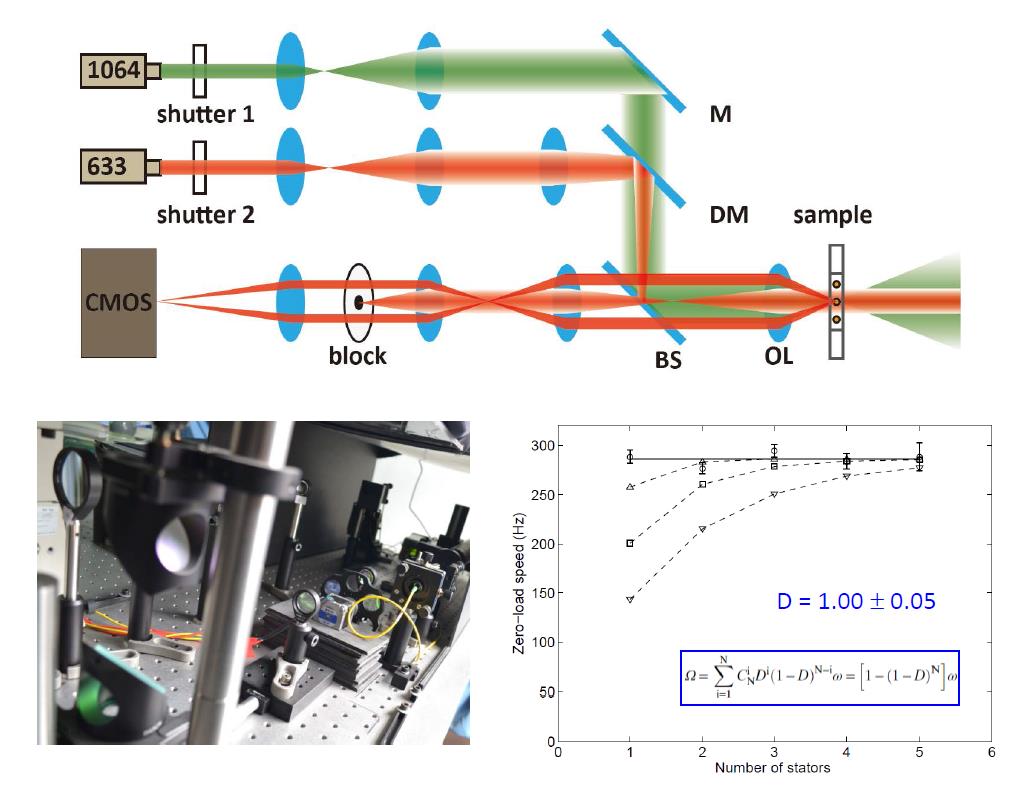The research group led by Prof.s YUAN Junhua and ZHANG Rongjing from University of Science and Technology of China (USTC) has made new progress in the study of bacterial motility. They developed new experimental techniques, measured and clarified a key feature in the dynamics of the bacterial flagellar motor¾the duty ratio of the torque-generating units in the motor. This work has been published in PNAS [PNAS 114:12478-12482(2017)] recently.
The bacterial flagellar motor drives the rotation of helical flagellar filaments, which propels the swimming of flagellated bacteria (such as E. coli). It is a nanotechnological marvel in nature. Each motor can have multiple torque-generating units (called stators), which interact with the rotary part of the motor (called rotor) and generate the torque that drives the rotation of the rotor. The duty ratio of the stators, defined as the fraction of time that a stator engages with the rotor, characterizes the torque-generating dynamics of the motor. The dependence of the limiting speed (zero-load speed) of the motor on the number of stators is the determining test of the duty ratio.

Fig.1. A schematic diagram of the optical setup (top); A photograph of part of the setup (bottom left ); The duty ratio was determined to be 1 (bottom right).
During the last 20 years, multiple experiments have been carried out to measure the duty ratio, which inspired multiple theoretical models of the motor dynamics. However, due to technical limitations, it was previously impossible to measure the number of stators for motors under zero-load precisely. This made it difficult to determine the duty ratio conclusively. Therefore, it was a long-standing controversy experimentally and theoretically regarding the value of the duty ratio. The group led by Profs. Yuan & Zhang developed a novel technique combining bright-field microscopy, laser dark-field microscopy, and optical trapping to resolve this controversy. They found that the zero-load speed is independent of the number of stators for the flagellar motor in E. coli, demonstrating conclusively that the stators have a duty ratio close to 1.
This work was supported by National Natural Science Foundation of China, the Ministry of Science and Technology of China, and Fundamental Research Funds for the Central Universities. Prof.s YUAN Junhua and ZHANG Rongjing are supported by the 1000 Youth Talent Program.
Article link:
http://www.pnas.org/content/114/47/12478.abstract
Contact:
Prof. YUAN Junhua, jhyuan@ustc.edu.cn
Prof. ZHANG Rongjing, rjzhang@ustc.edu.cn
http://staff.ustc.edu.cn/~jhyuan
(School of Physical Sciences, Hefei National Laboratory for Physical Sciences at the Microscale)
